Do you love British flowers? If so, there are so many beautiful ones, from wildflowers, annuals to houseplants.
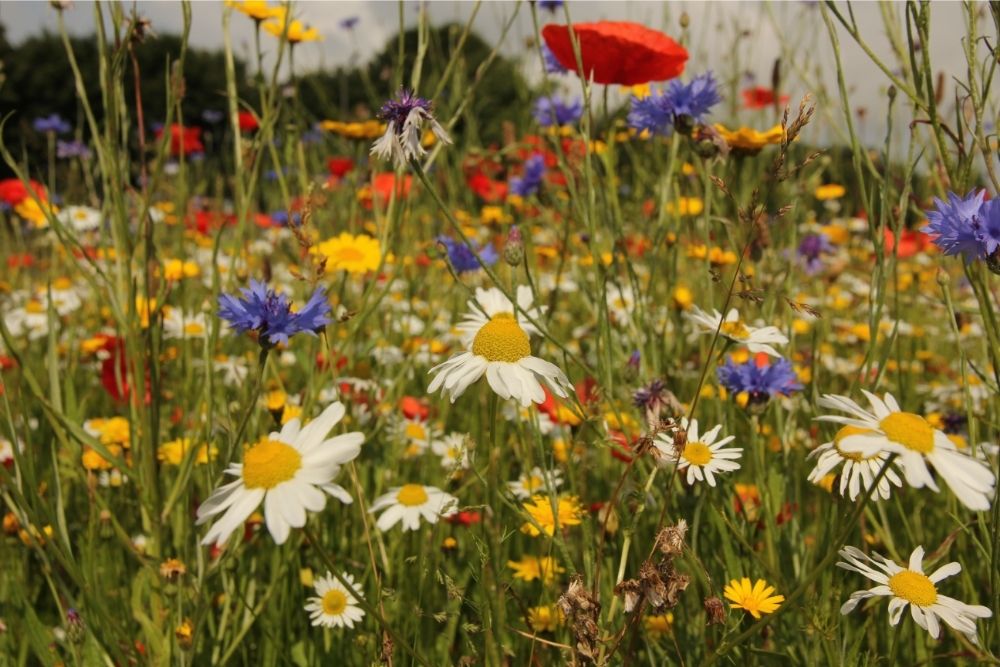
Even if you don’t live in Britain, you can still nurture these gorgeous plants in a suitable climate, such as one that has quite a lot of rain! Who says a well-known place for bad weather can’t produce pretty blossoms?
If you want to liven up your flower bed, look at some lovely pictures, or simply learn more about some plants, you’re in luck. There are many British flowers in different variants, shapes, and colors, which means you can personalize your arrangement to suit your style.
These plants are super popular with botanists, florists, and horticulturists. Still, you don’t have to be a professional to enjoy them.
However, if you’re an amateur gardener, it can be tricky to work out the best British flowers to get. Not knowing what the species you’re getting and how to care for it can cause them to die on you.
We recommend thoroughly researching what plants you want to stop this from happening. So, to save you from spending ages educating yourself, we have collected information aplenty.
The following article will tell you tonnes about British flowers, what they need, and who they’re suitable for. So, read on!
1. Rose
This is a staple in traditional British horticulture, so much so that pretty native people from these countries are called English roses. You can get roses in many different colors, which produce delicate blooms popular in bouquets and have characteristic spiky stems.
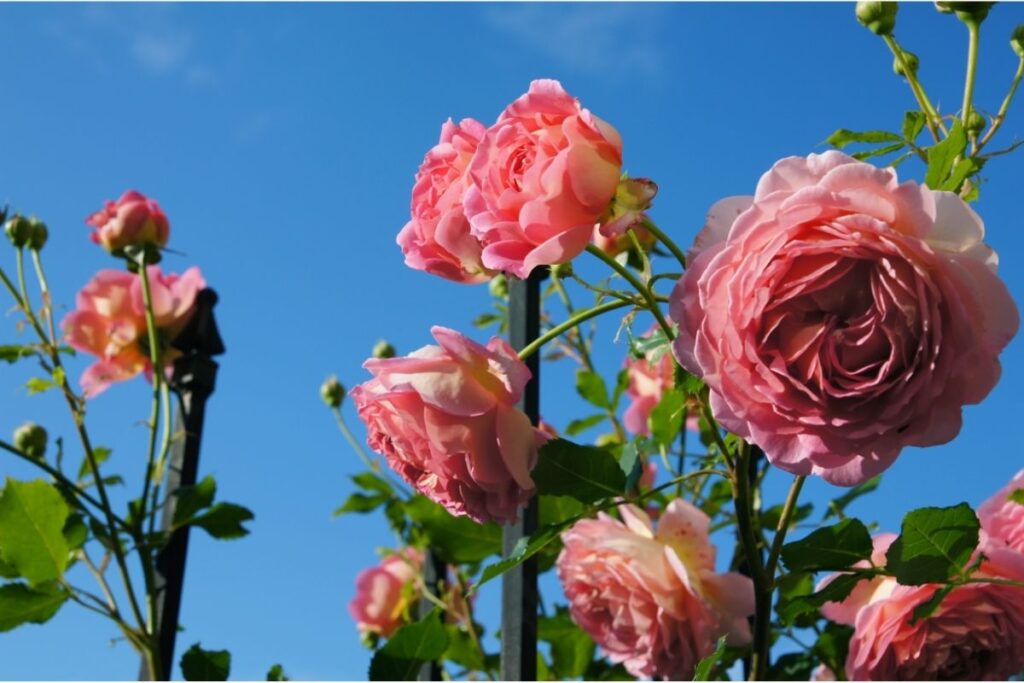
2. Tulip
The Tulip can come in many fun colors, which create structure aplenty, making them ideal for planting in a neat flower bed. Also popular in the Netherlands, this pretty flower is grown from bulbs, eventually producing its rounded shape when appropriately nurtured.
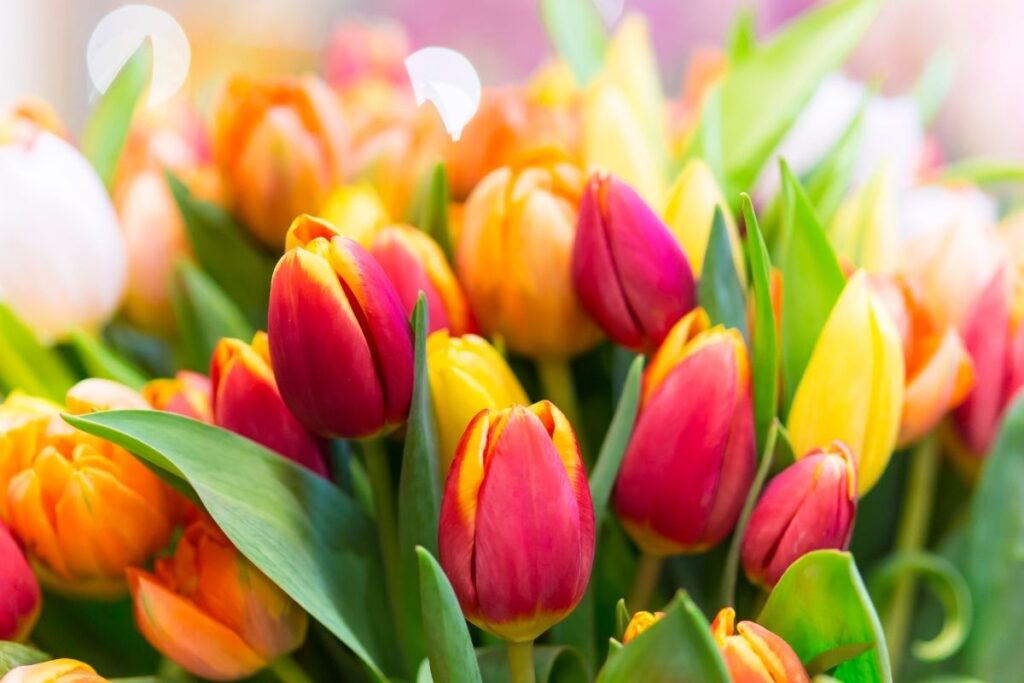
3. Lily
Lilies symbolize purity and have long soft petals, super fragrant and impressive in a bouquet. There are many different types, which are super gorgeous additions to any bride’s wedding arrangement.
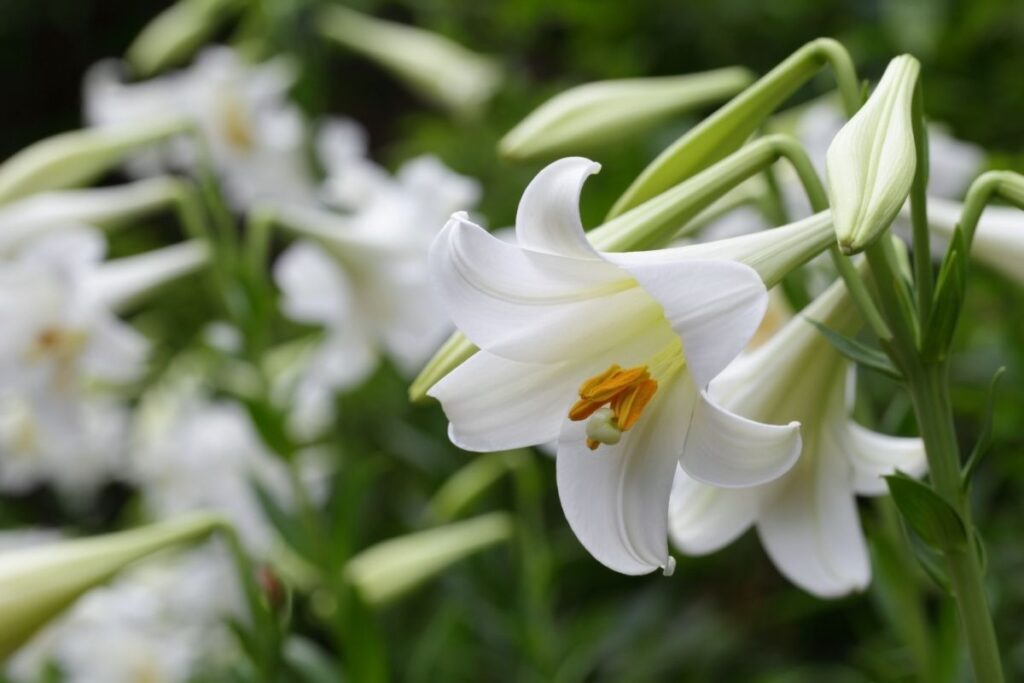
4. Freesia
Naturally fantastic, the freesias have an informal structure, meaning they’re perfect for growing if you’re a laid-back person who wants to reflect this in their garden. This is a super popular item, bought in the millions yearly, so you can be sure that its beauty is almost universally liked.

5. Sweet Pea
As the name suggests, this flower has a sweet scent, so it’s ideal for adding to a sensory garden to bring fragrance. Whether you want them in orange, pink, cream, or purple, you can get them, and they will blossom in the summer months.

6. Orchid
The orchid is beloved by houseplant caretakers because it produces super vibrant flowers, which don’t need super regular watering. These plants come in every color imaginable, so you can enjoy those that complement your interior design.
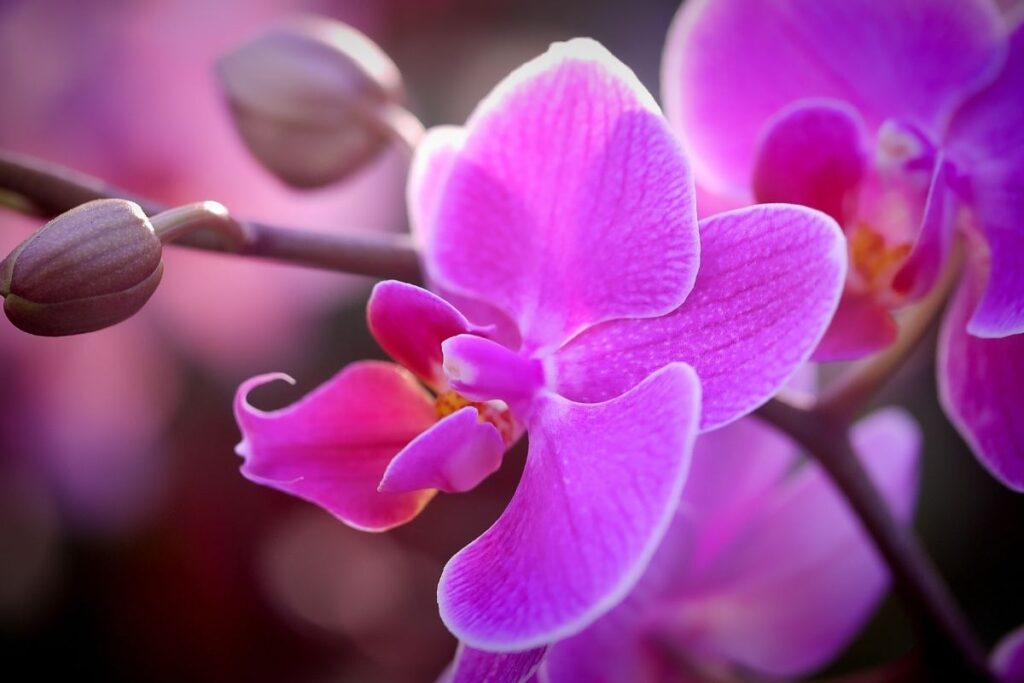
7. Carnation
The carnation is traditionally in bouquets, which are bought in most British superstores so that you can gift them to loved ones when in this country. The frilly petals often have ombre designs, which sit atop a thin stem and gather together in a thick formation.
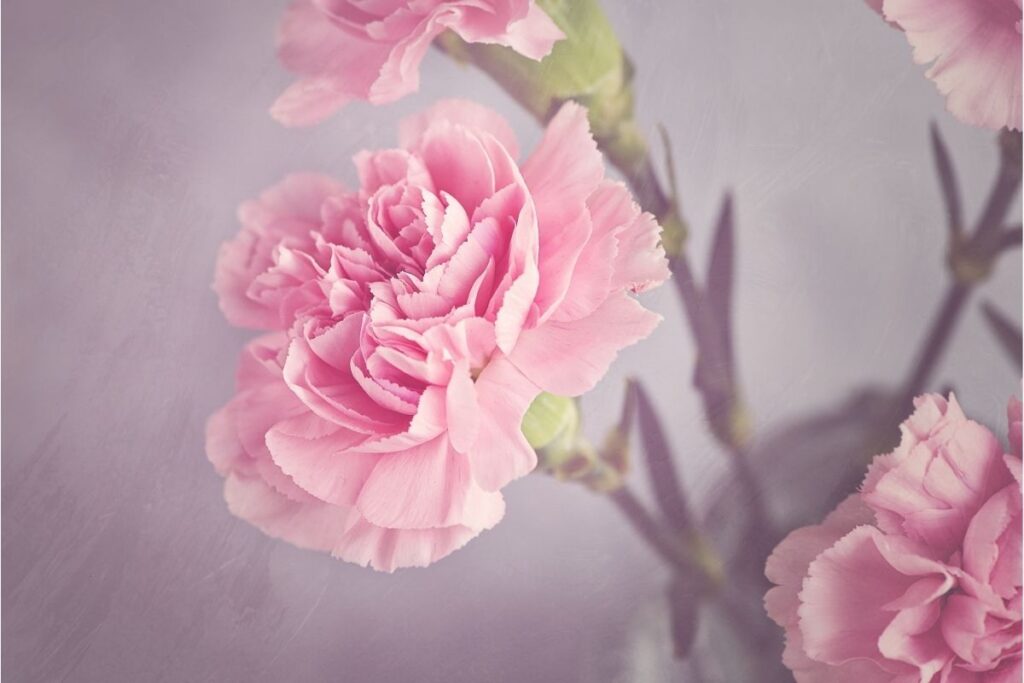
8. Sunflower
The sunflower is popular because it produces vibrant yellow petals with dark brown centers, which rise vertically upwards. These bold blossoms add structure to any landscaping scheme, can be bought in kits, and is a popular activity for guardians to do with the children in their care.

9. Honeysuckle (Caprifoliaceae)
The sweet-smelling honeysuckle is poisonous when eaten yet looks super lovely when it blossoms. Blooming from June to September, it can thrive in shaded spots near walls, using up that bare space that’s been annoying you when you look at it.
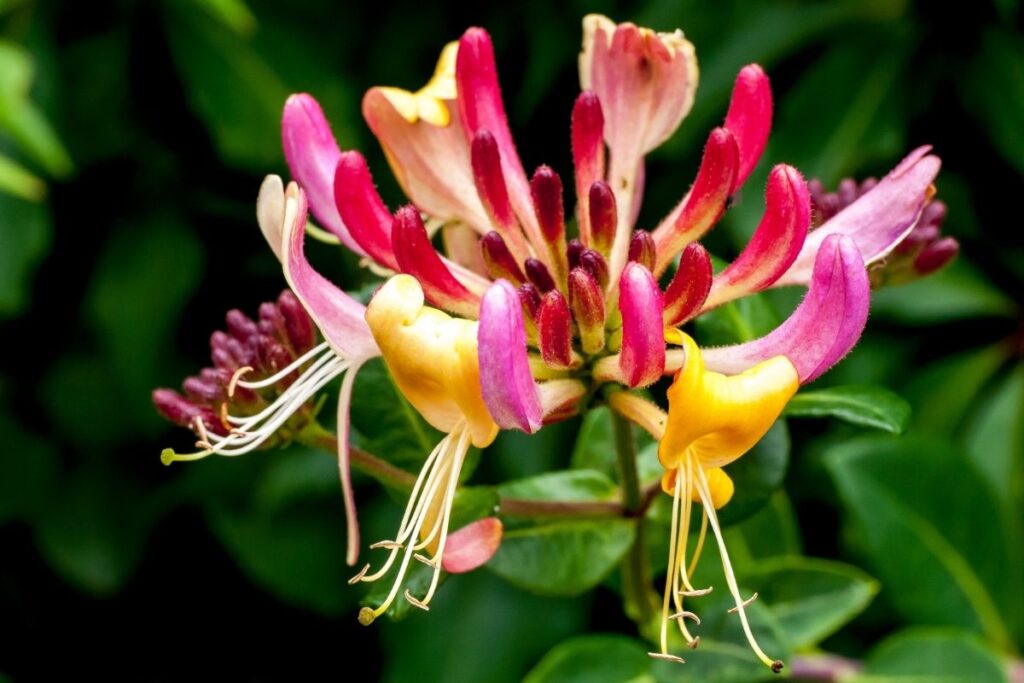
10. Enchanter’s Nightshade (Circaea lutetiana)
The Enchanter’s nightshade (Circaea lutetiana) is a wildflower, which blossoms on super delicate stems. The flowers are light white and burgundy colored, which are small and bloom from June to August.
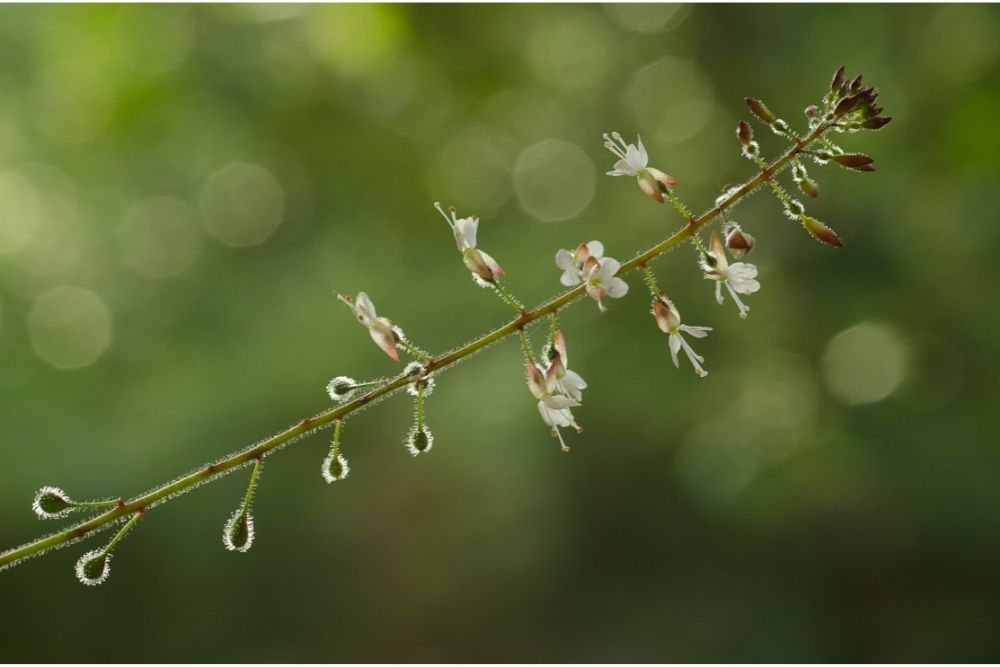
11. Columbine (Aquilegia)
The Columbine (Aquilegia) has light yellow and deep purple petals, with soft petals fanning outwards. The thin green stems produce these flowers from May to June and grow in Colorado.
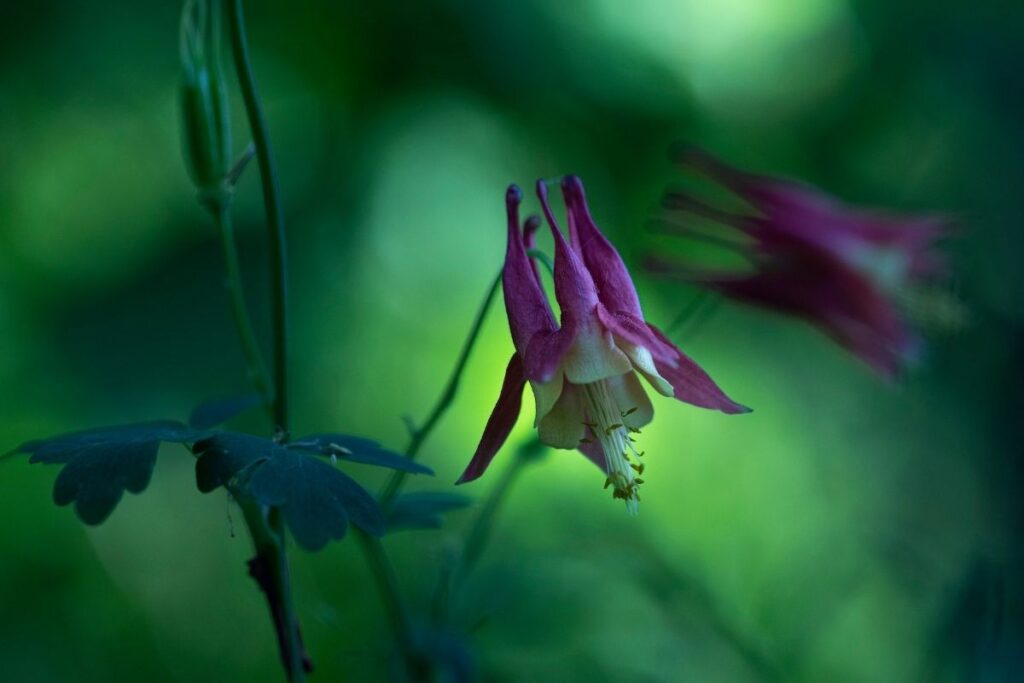
12. Kingcup (Caltha Palustris)
The Kingcup (Caltha palustris) is known for its bright yellow tiny flowers, central to many well-known traditional children’s games in playgrounds. You can enjoy these flowers for a super long period because they bloom from March to August, too!
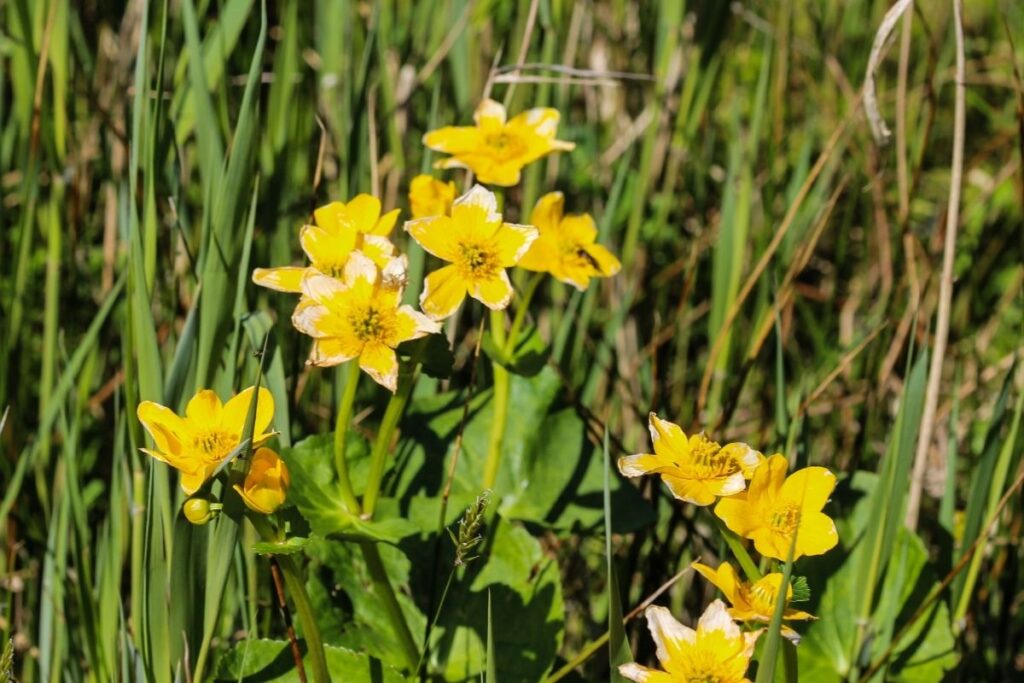
13. Cornflower (Centaurea Cyanus)
This is a super blue petal-dense flower with dark purple centers and adds a pop of color to any landscaping. In addition, this summer plant produces blossoms, which sit delicately atop thin green stems and is perfect for putting in flower beds.
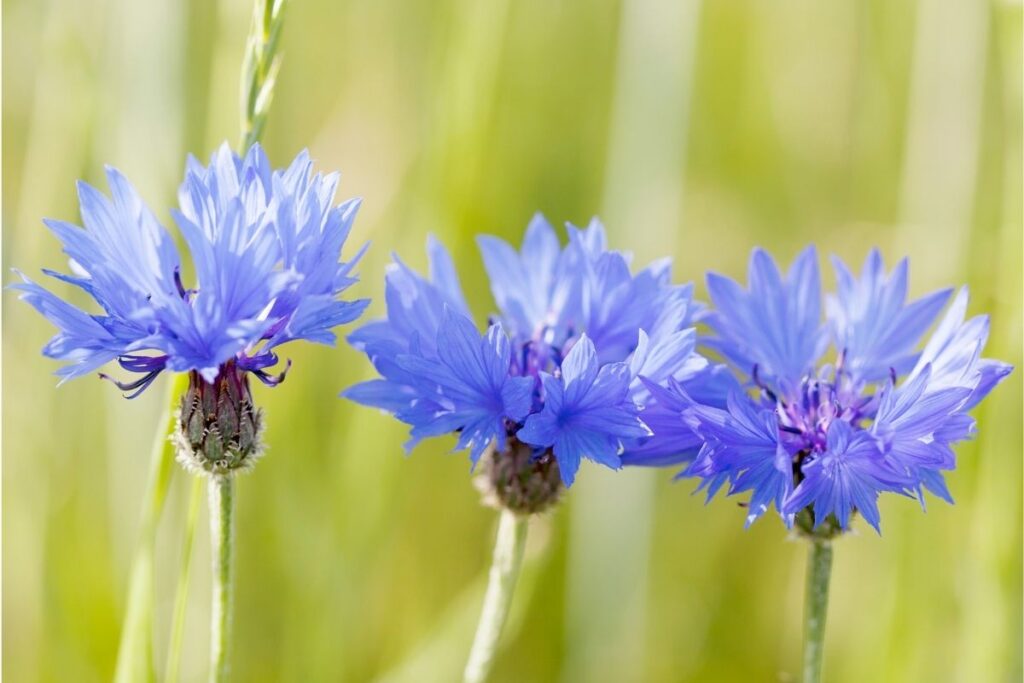
14. Water Avens (Geum Rivale)
Loved by pollinators such as bumblebees, the Water avens (Geum rivale) grows downward-facing fluffy pink flowers. This is also a plant that’s known for being medical, as it produces loads of tannins, which are known to be an antiseptic and anti-inflammatory substance.
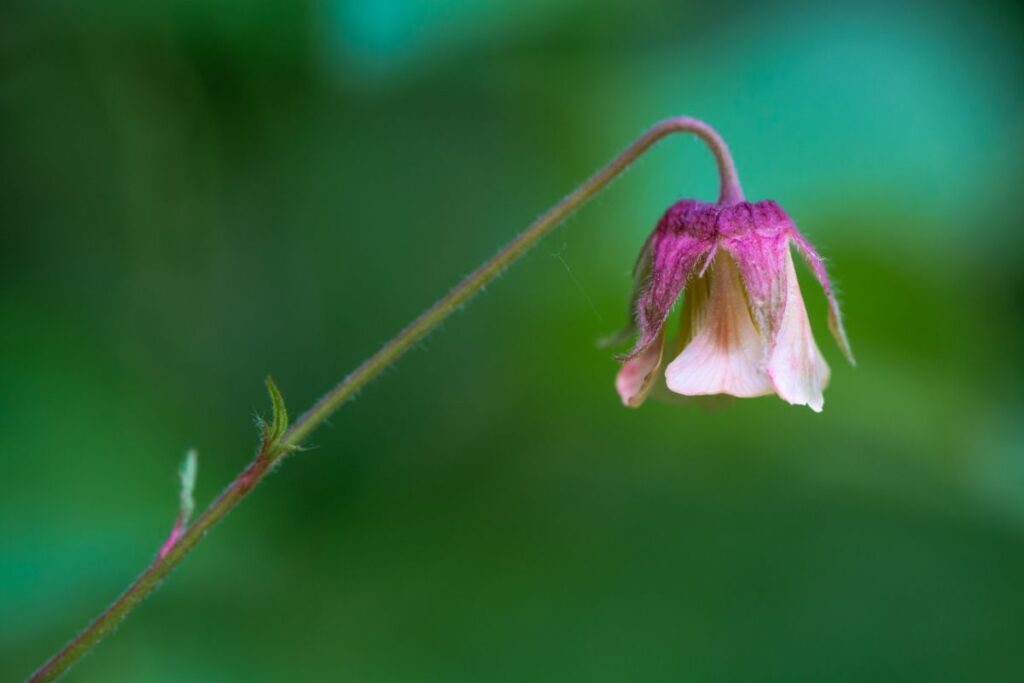
15. Scarlet Pimpernel (Anagallis Arvensis)
The Scarlet pimpernel (Anagallis arvensis) produces tiny orange blossoms with purple centers above rounded light green foliage. Known to some as a weed, this plant is a wildflower, a super pretty addition to a British landscape, even if it’s not strictly meant to be there.
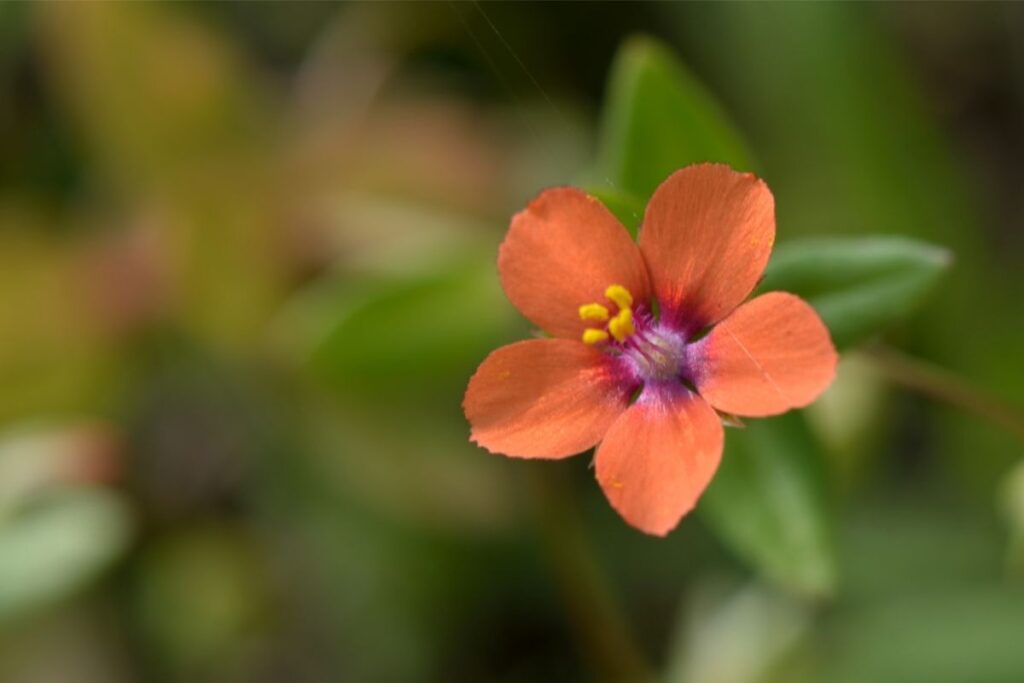
16. Ragged Robin (Lychnis Floscuculi)
The Ragged Robin (Lychnis floscuculi) produces light pink and long messy flowers. It looks as though an adorable child has drawn them into reality. Blossoming from May to August, the unique petals would be a fantastic way to soften up an overly structured shape.
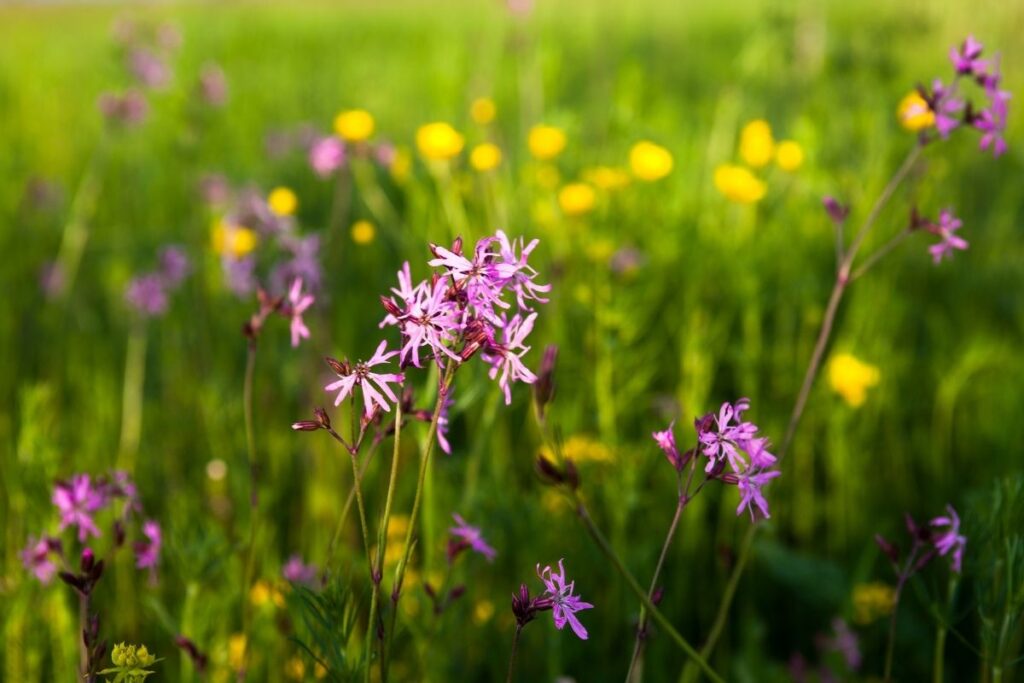
17. Forget-Me-Not (Myosotis)
The Forget-me-not is a romantic flower, which gets its name from a traditional German tragic story. The tiny blue flowers with white centers are super eye-catching a sprout from dark-colored thin stems, so it’s ideal for adding to a delicate wedding bouquet.
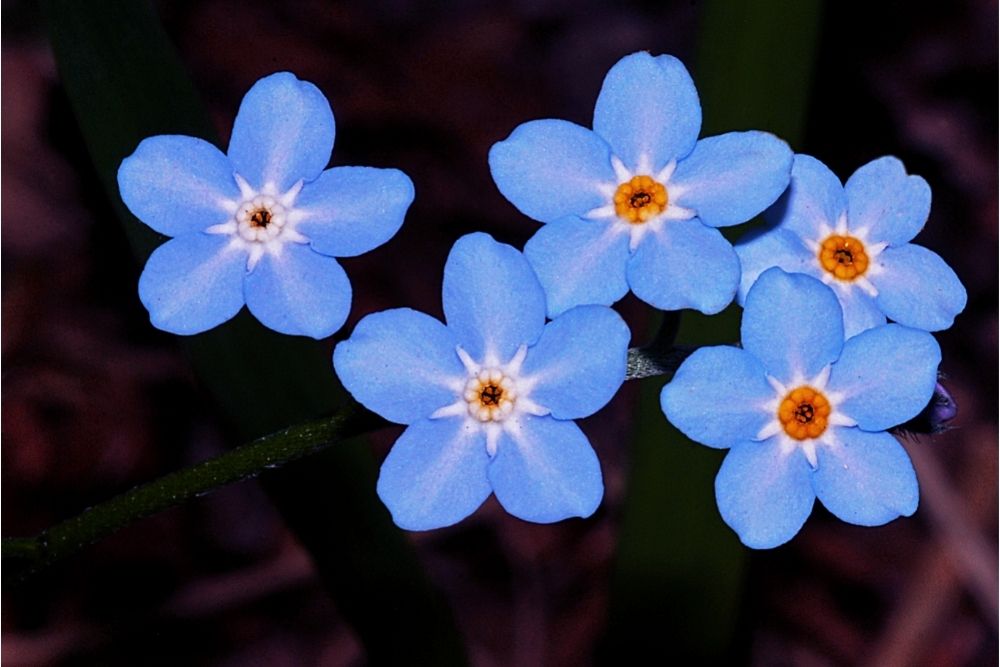
18. Dog Rose (Rosa Canina)
The light pink Dog Rose (Rosa canina) has soft, delicate petals with dark green waxy leaves. This makes it a perfect shrub to add to a spot that’s looking neglected, as it has a bushy silhouette meaning it’s an easy space filler.
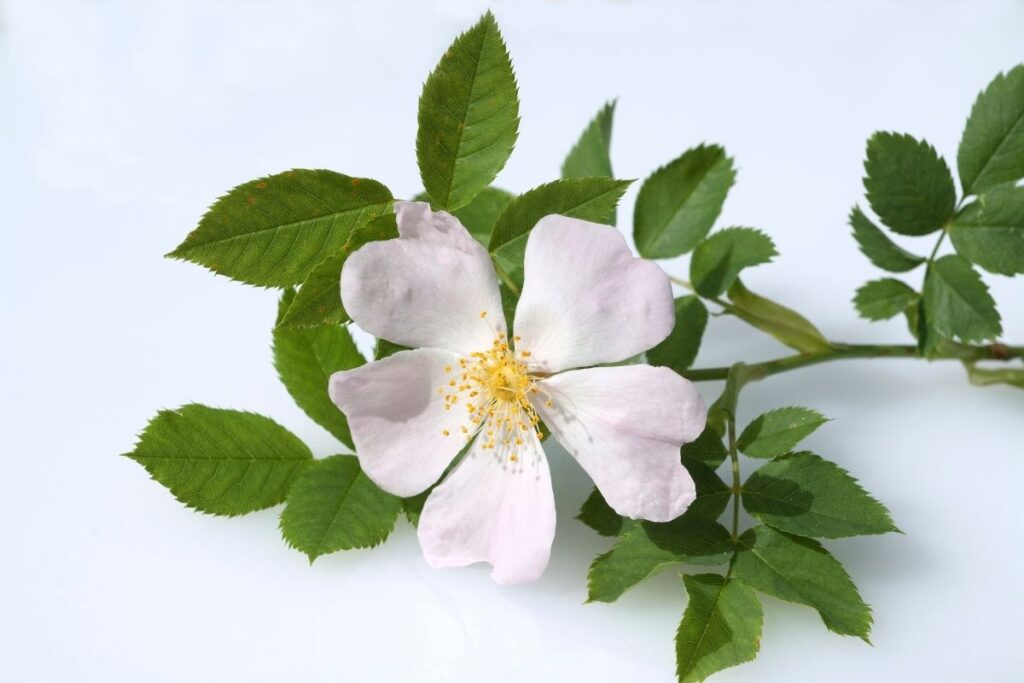
19. Anemones
Making an appearance in early Spring, Anemones have fairytale-worthy soft petals in purple, with dark centers, which appreciate a gentle touch. These are beloved by flower arrangers as they can last for 10 days when put in water and are super showy additions to any home.

20. Astrantia
These are fluffy white blooms, perfect for adding to arrangements as they bring softness that balances out more structured flowers. To nurture these beauties, we recommend making sure they’re planted in moist earth and have at least partial sunlight.
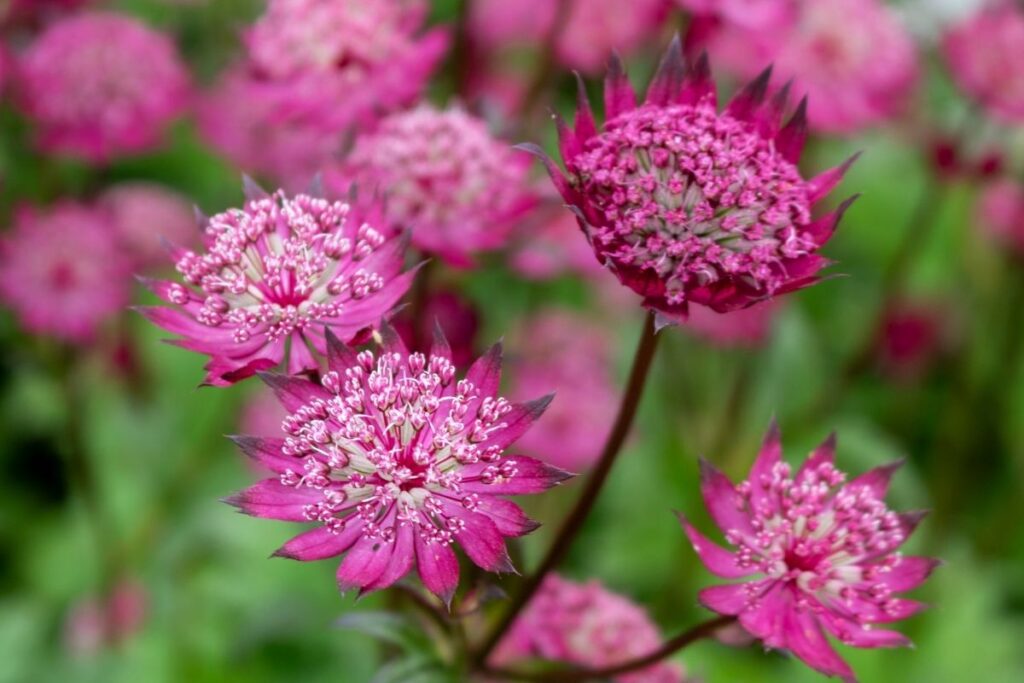
21. Dahlias
If you’re searching for a vibrant, structured flower that has movement aplenty, the Dahlias are the one for you. These have neat petal formations when they’re looked after properly, which involves ensuring they’re in slightly wet earth and have at least partial sunlight.
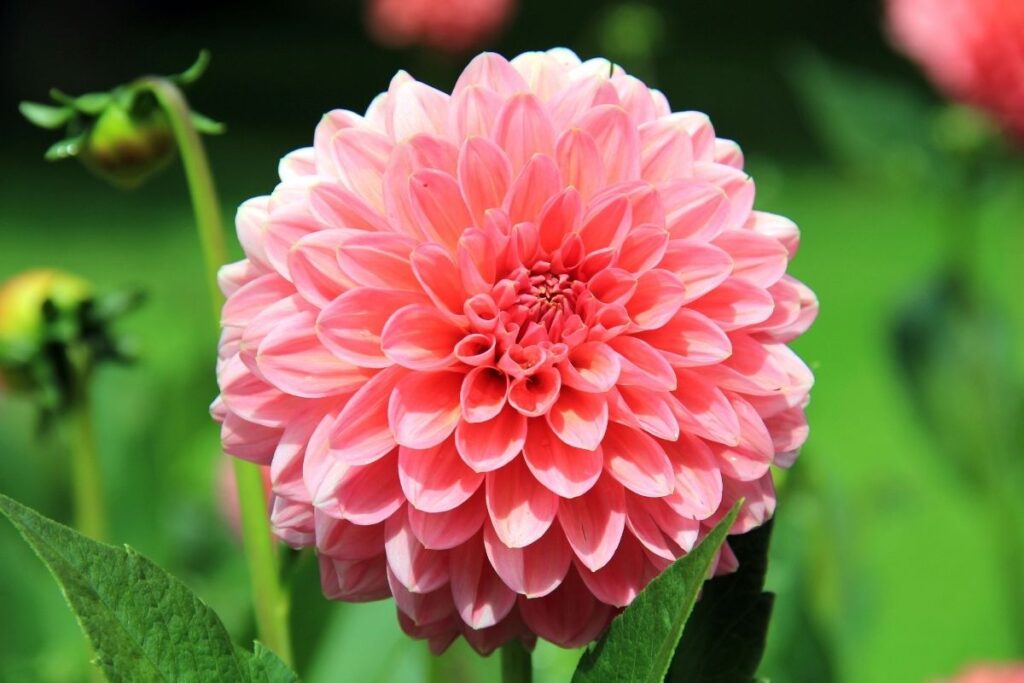
22. Delphiniums
These are popular with vase arrangements because they add height and bold blue color. However, suppose you’re looking to attract more gorgeous pollinators to your natural space.
In that case, we recommend planting these because bumblebees adore them throughout Spring and summer when they bloom.
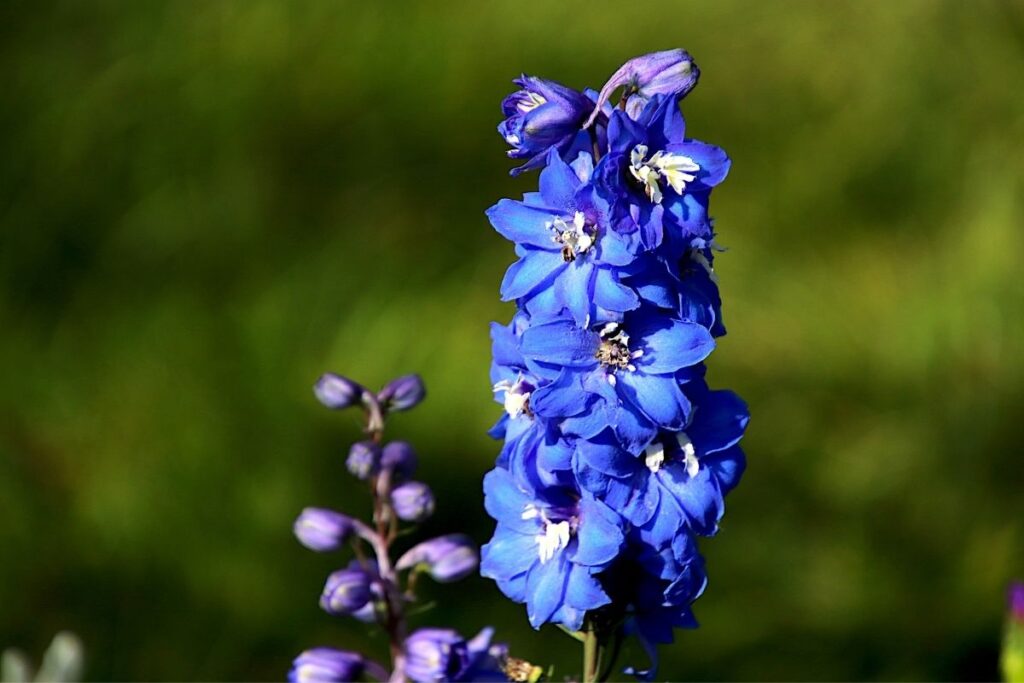
23. Sweet William
Sweet Wiliams is a great one to get if you want to start cutting flowers from your garden to put them in a vase. This is because they produce round delicate blossom formations, which are beautifully fragrant and can last 14 days when the cut blossoms are put in water.
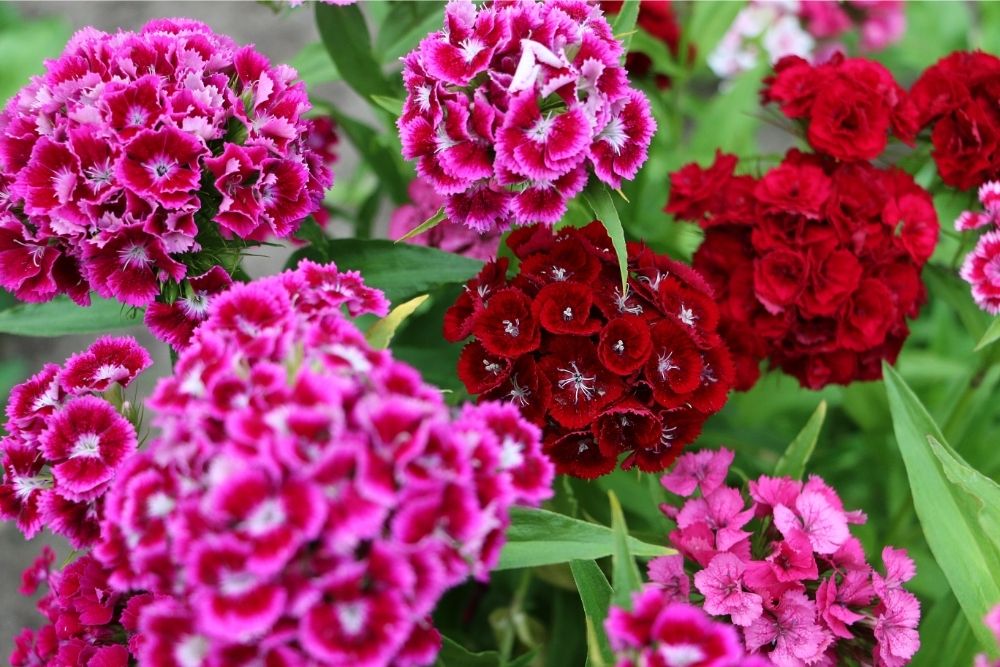
24. Bluebells
Bluebells can be seen in countryside hedgerows, popping up in Spring and producing trumpet-shaped violet flowers. These are beautiful wildflowers and are often found in woodland spots so they can survive in shaded areas, which means it’s perfect for planting under trees.
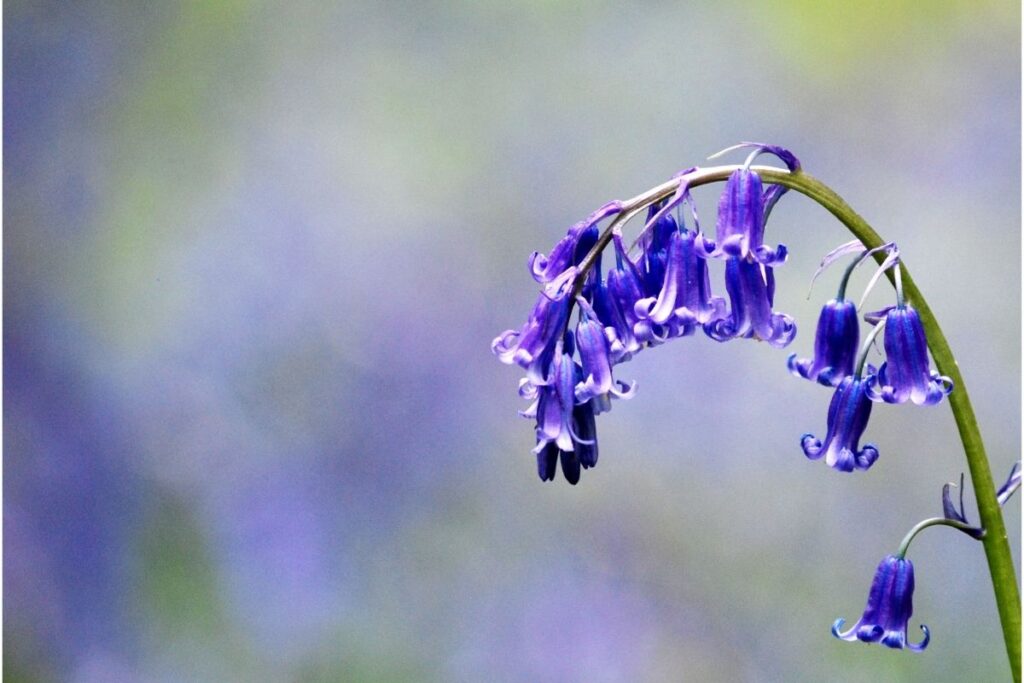
25. Bramble
Even though it’s a pesky weed in many British gardens, the bramble grows gorgeous delicate flowers and deliciously juicy flowers. So if you love having a multipurpose flowering plant and don’t mind spiky species, the bramble is ideal as the fruit can be used to make tarts.
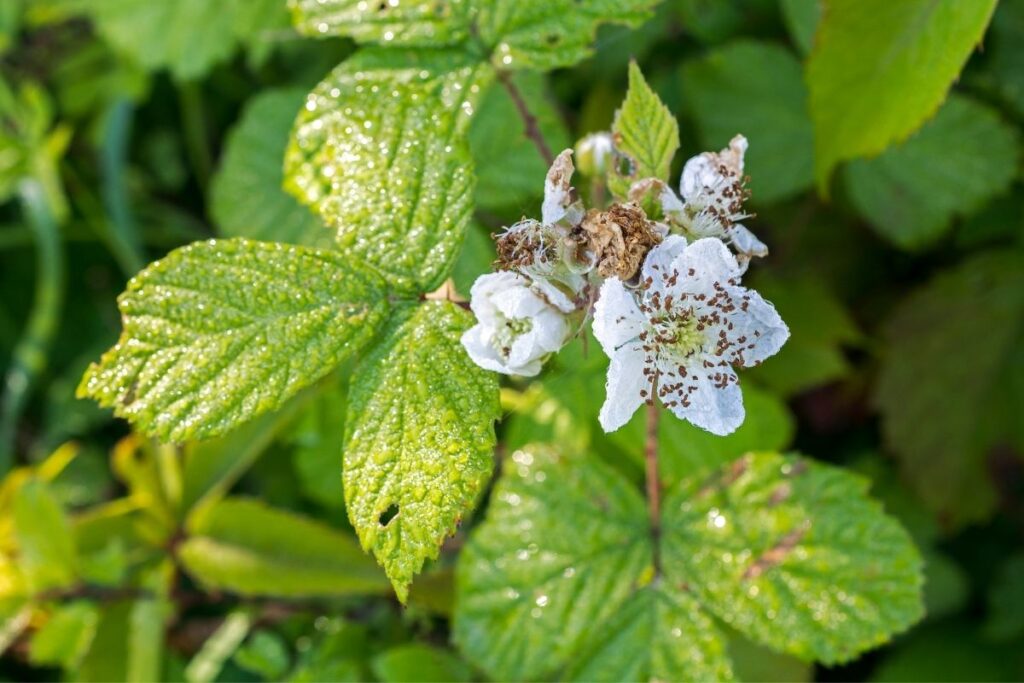
26. Common Dog Violet
Are you searching for a fun flower that attracts butterflies? If so, the typical dog violet will do just that and give you tiny purple flowers, too!
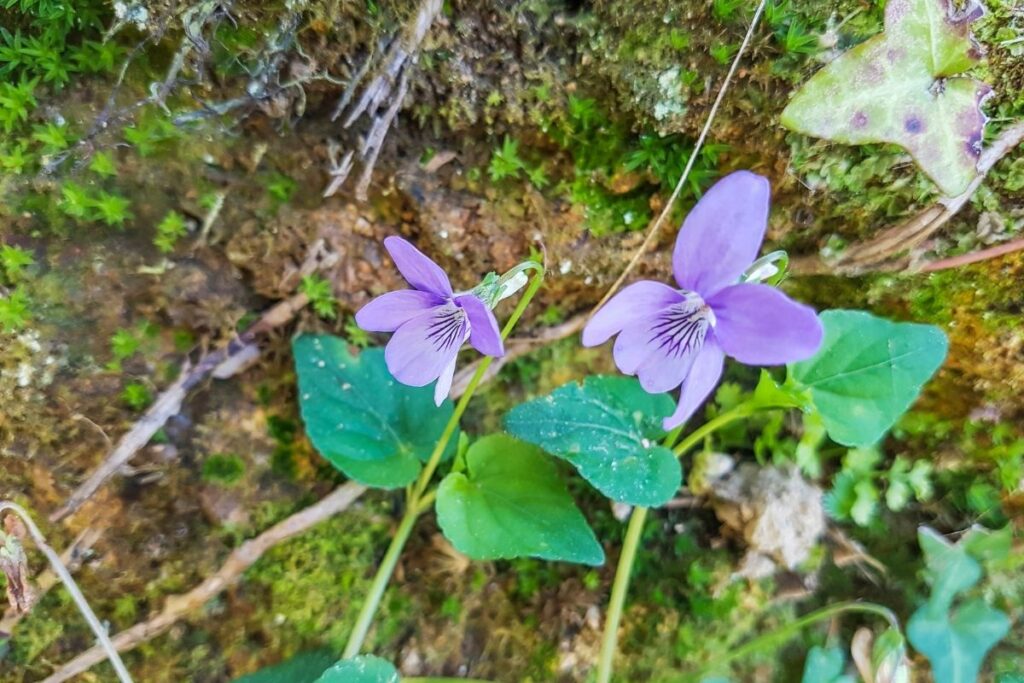
27. Cow Parsley
Cow parsley is super typical in countryside areas, producing speckled bursts of tiny white flowers. You can see these blossoms when they’re in season, and you go on a countryside walk, or you might even observe a wild rabbit munching on them.
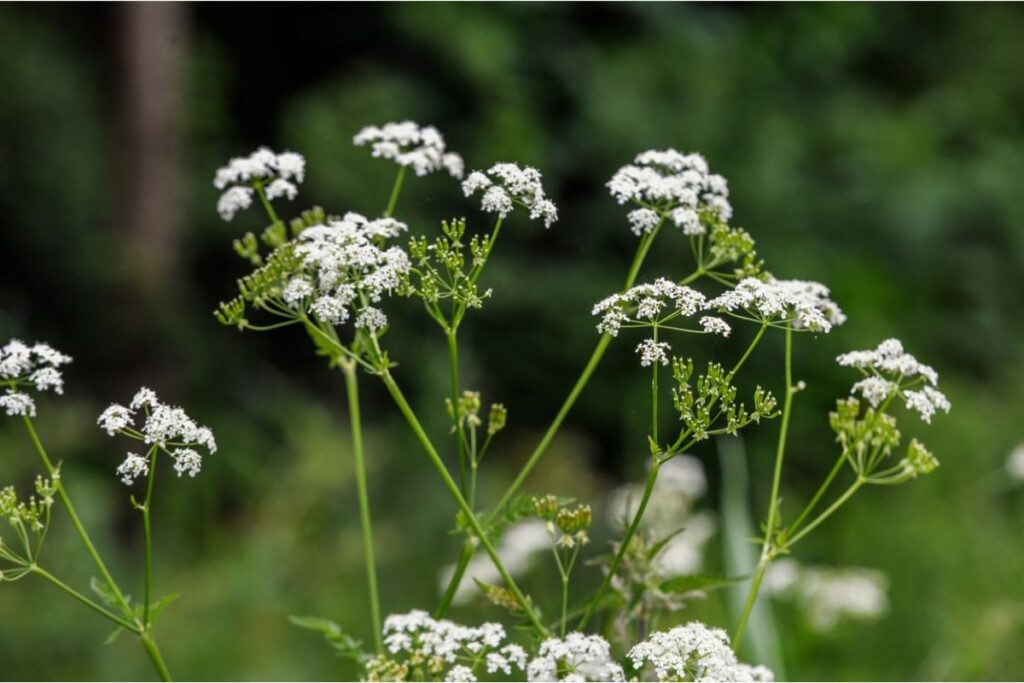
28. Cowslip
These flowers are yellow and, for that reason, are commonly associated with Easter. And, if you wander through a British meadow in springtime, you’ll highly likely catch sight of these frilly golden blossoms.
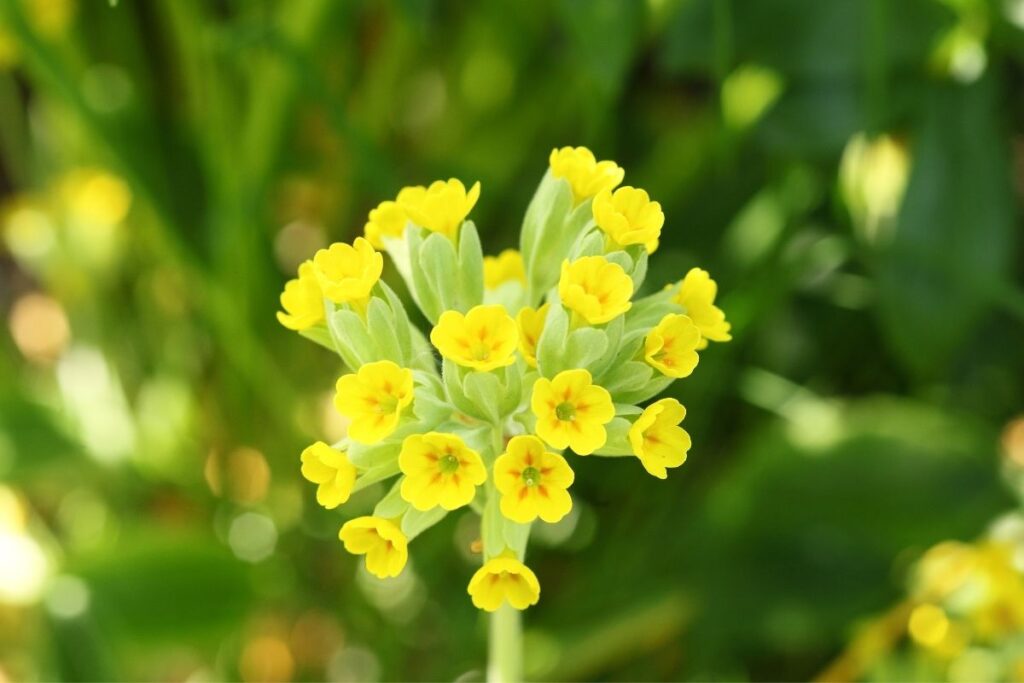
Conclusion
We’ve listed 28 different flowers, ranging from wildflowers, shrubs to bridal bouquet-ready blooms. Our favorites are bluebells because they are super common and a lovely surprise for us when we walk around in the country during springtime.
We recommend thoroughly researching the species before purchasing to work out which flower to choose.
And, if you can’t get enough, we have content aplenty here to help you develop your natural space!
Editor’s Recommendations
26 Delightful Brazilian Flowers (With Pictures)







